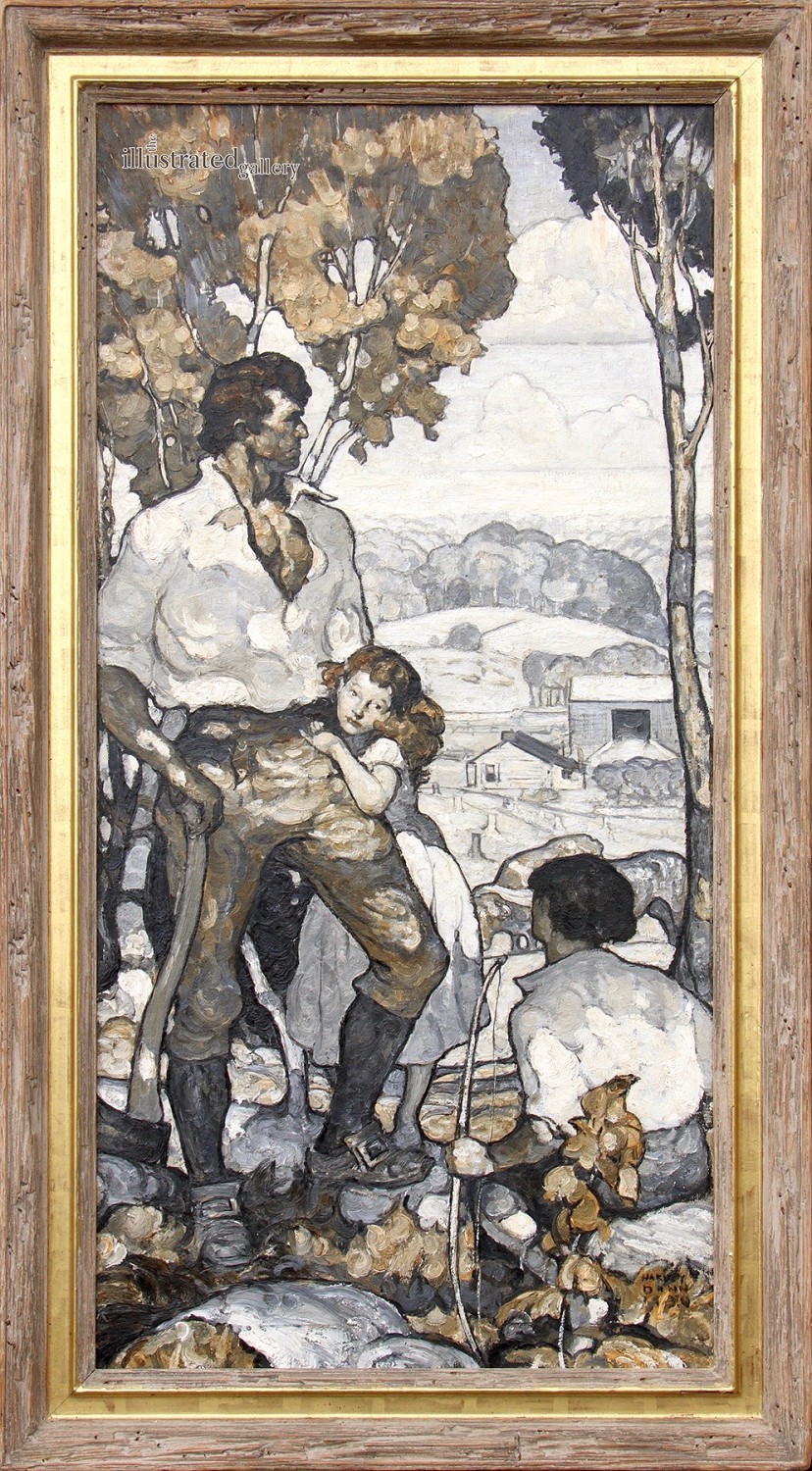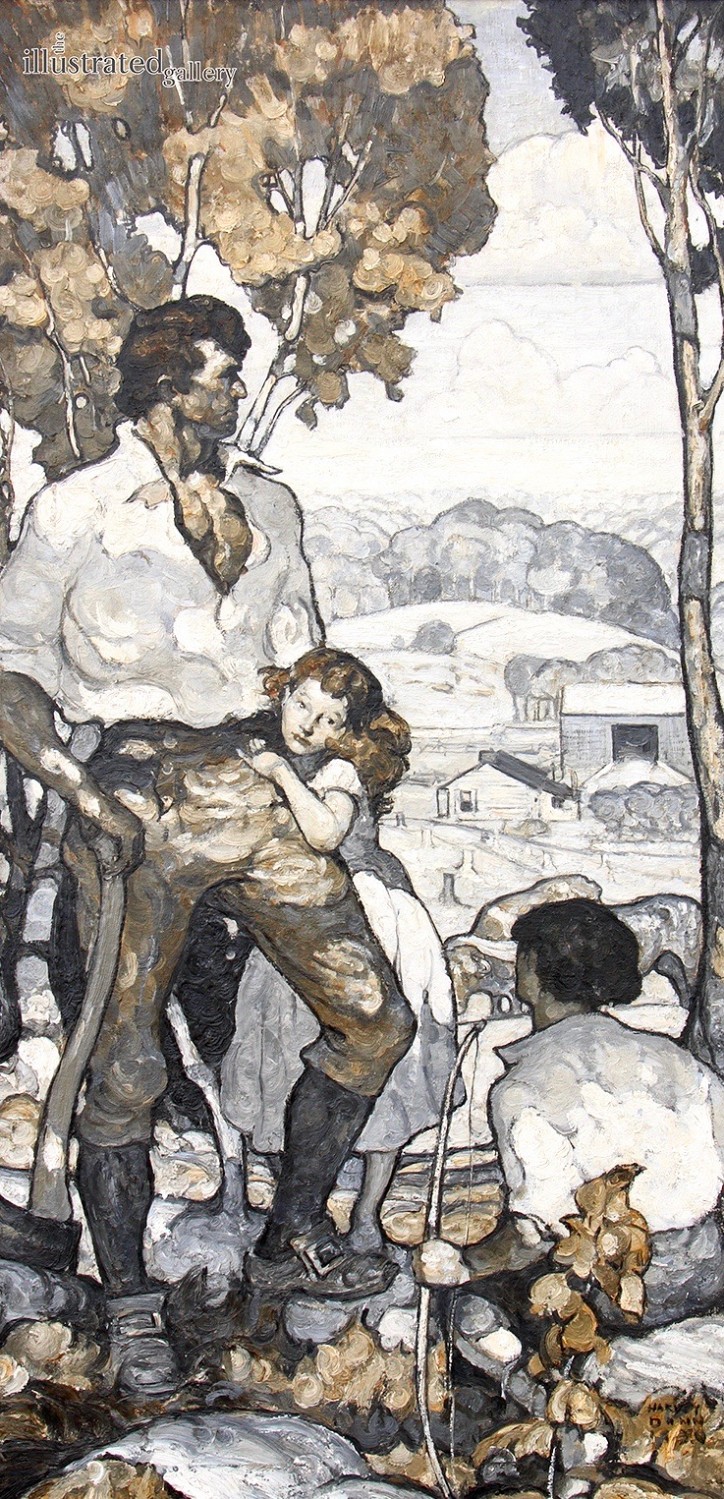"Mine, Aetna Life Insurance Advertisement" Lot no. 2081
By Harvey Dunn 1884-1952
1930 (Estimated)
40.00" x 20.25"
Oil on Canvas
Signed and Dated Lower Right
SOLD
Advertisement for Aetna Life Insurance Company in the Saturday Evening Post, November 8, 1930, p. 99.
Signed and dated lower right "Harvey Dunn 1930".
Canvas: 40''H x 20.25''W; Frame: 45.75''H x 25.5''W.
Explore related art collections: Men / Advertisements / Black & White / 1930s / Family / Landscape / Brandywine School / $20,000 - $50,000
See all original artwork by Harvey Dunn
ABOUT THE ARTIST
Harvey Dunn was a large, powerful man who paid for his art schooling by “sod-busting”, plowing under the thick, virgin, prairie grass for his home-steading neighbors of the Red Stone Valley of South Dakota.
From the Art Institute of Chicago, he was invited by Howard Pyle to study at Chadds Ford. Of all Pyle’s students, Dunn was most deeply imbued with his philosophy, and as a teacher passed it along together with his own ideas, his straight-forward honesty and intolerance of pretense. Among his students were Dean Cornwell, Harold Von Schmidt, Amos Sewell, Lee Gustavson, Mario Cooper, Saul Tepper, and numerous others.
Dunn’s pictures, like the man, were forceful, yet combined great sensitivity with brilliant use of color. During World War I, Dunn was commissioned a Captain as an official war artist with the A.E.F. His experiences under fire produced many striking documentary drawings and paintings, now part of the archives of the Smithsonian Institution.
From notes taken during one of his classroom criticisms, the following fittingly describes his credo:
“Art is a universal language, and it is so because it is the expression of the feelings of man. Any man can look at a true work of art and feel kin to it and with him who made it – for he has the same number of heartbeats a minute, comes into the world to face the same joys, sorrows, and anticipations, the same hopes and fears. A vastly different vision may arise in the consciousness at the mention of a word, but our feelings are the same. By this you may know that the Brotherhood of Man is.”*
*quoted from An Evening in the Classroom, 1934



